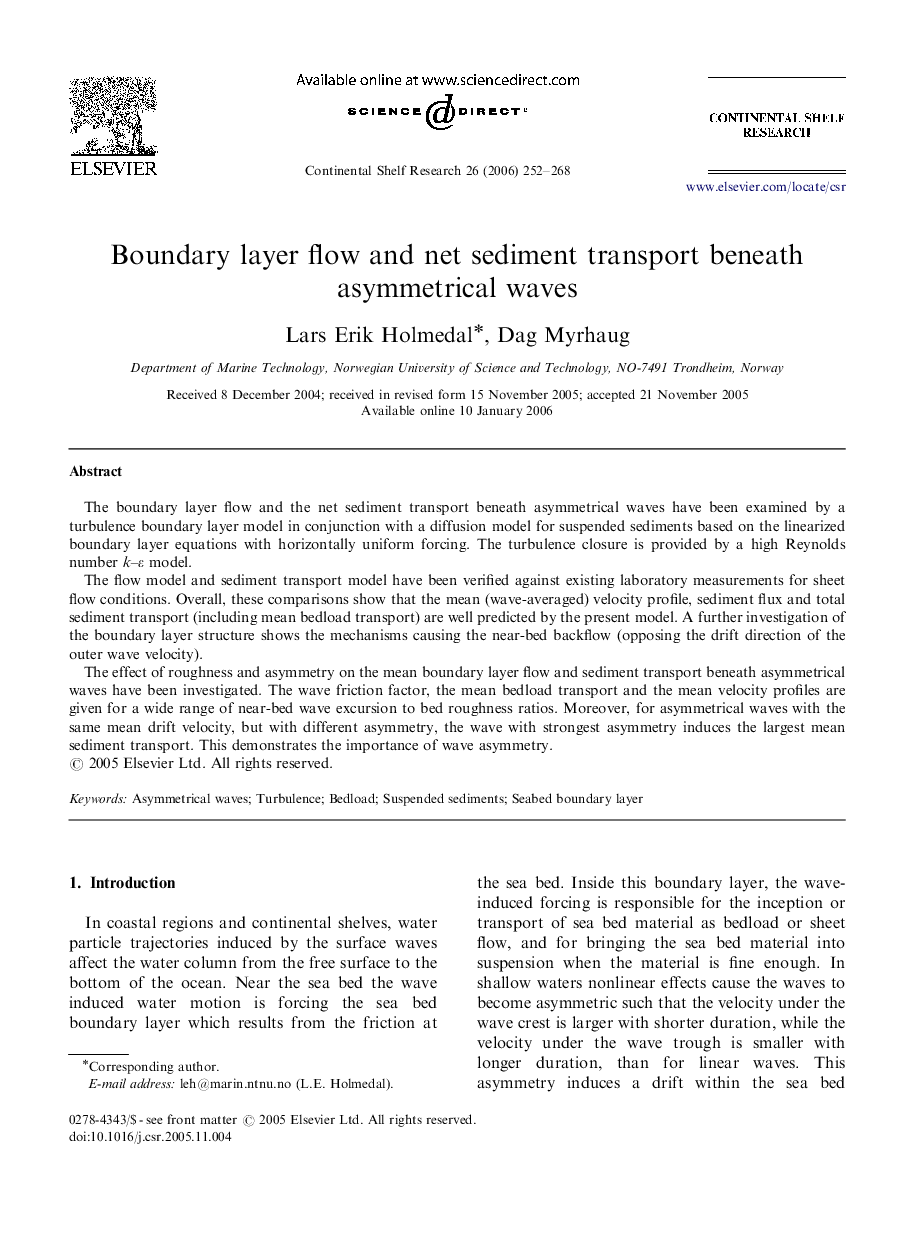| Article ID | Journal | Published Year | Pages | File Type |
|---|---|---|---|---|
| 4533709 | Continental Shelf Research | 2006 | 17 Pages |
The boundary layer flow and the net sediment transport beneath asymmetrical waves have been examined by a turbulence boundary layer model in conjunction with a diffusion model for suspended sediments based on the linearized boundary layer equations with horizontally uniform forcing. The turbulence closure is provided by a high Reynolds number k–ε model.The flow model and sediment transport model have been verified against existing laboratory measurements for sheet flow conditions. Overall, these comparisons show that the mean (wave-averaged) velocity profile, sediment flux and total sediment transport (including mean bedload transport) are well predicted by the present model. A further investigation of the boundary layer structure shows the mechanisms causing the near-bed backflow (opposing the drift direction of the outer wave velocity).The effect of roughness and asymmetry on the mean boundary layer flow and sediment transport beneath asymmetrical waves have been investigated. The wave friction factor, the mean bedload transport and the mean velocity profiles are given for a wide range of near-bed wave excursion to bed roughness ratios. Moreover, for asymmetrical waves with the same mean drift velocity, but with different asymmetry, the wave with strongest asymmetry induces the largest mean sediment transport. This demonstrates the importance of wave asymmetry.
